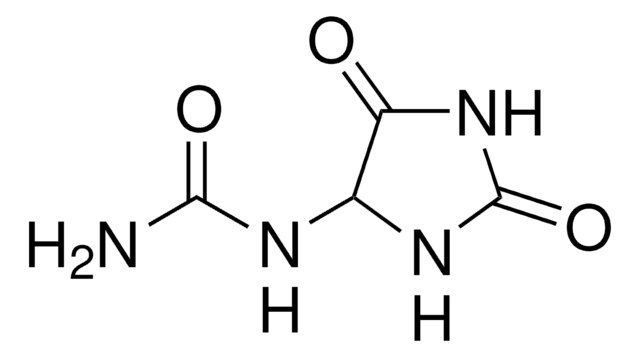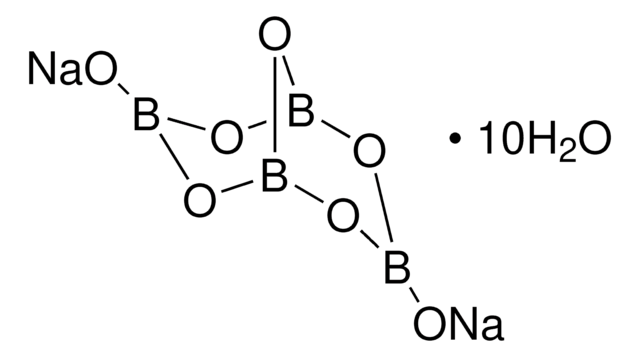About This Item
Recommended Products
grade
ACS reagent
Agency
suitable for SM 4500 - NH3
suitable for SM 5210
vapor pressure
2.6 mmHg ( 20 °C)
Assay
≥99.5%
form
powder
technique(s)
PCR: suitable
impurities
≤0.005% Insoluble in methanol
≤0.05% Nonvolatile with methanol
mp
160 °C (dec.) (lit.)
solubility
water: soluble
density
1.440 g/cm3
anion traces
chloride (Cl-): ≤0.001%
phosphate (PO43-): ≤0.001%
sulfate (SO42-): ≤0.01%
cation traces
Ca: ≤0.005%
Fe: ≤0.001%
heavy metals: ≤0.001% (by ICP)
SMILES string
OB(O)O
InChI
1S/BH3O3/c2-1(3)4/h2-4H
InChI key
KGBXLFKZBHKPEV-UHFFFAOYSA-N
Looking for similar products? Visit Product Comparison Guide
General description
Application
- N-substituted cinnamamides via amidation reaction between cinnamic acid and benzylamines.
- β-Aminoalcohols through the regioselective epoxides ring opening with aromatic amines in the presence of glycerol as a co-catalyst.
- Organosulfur compounds via thia-Michael addition of thiols to α, β-unsaturated compounds.
Signal Word
Danger
Hazard Statements
Precautionary Statements
Hazard Classifications
Repr. 1B
Storage Class Code
6.1C - Combustible acute toxic Cat.3 / toxic compounds or compounds which causing chronic effects
WGK
WGK 1
Flash Point(F)
Not applicable
Flash Point(C)
Not applicable
Choose from one of the most recent versions:
Certificates of Analysis (COA)
Don't see the Right Version?
If you require a particular version, you can look up a specific certificate by the Lot or Batch number.
Already Own This Product?
Find documentation for the products that you have recently purchased in the Document Library.
Customers Also Viewed
Articles
Information on Isoelectric Focusing including what it is and how it is used. In order to ensure the high performance of analysis, isoelectric point (pI) standards are needed.
Our team of scientists has experience in all areas of research including Life Science, Material Science, Chemical Synthesis, Chromatography, Analytical and many others.
Contact Technical Service






